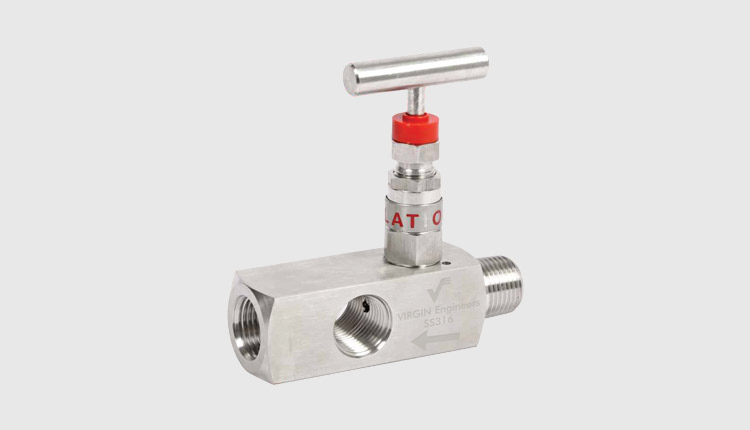A needle valve is a type of valve that can be used to regulate or complete the isolation of the fluid. The unique feature of the valve is the structure of a small plunger with the shape of a Needle. The plunger features a small handle to operate in the easy and precise operation of the valve. When fully attached, the extended end of the valve fits exactly into the seat, a part of the appliance that is being regulated. In case of valve opened by mistake, then also space between and needle and seat are so less, that a minimal amount of substance will be allowed to pass through it.
Features of Stainless Steel Needle Valve
- Flow control.
- In pump start.
- Pressure regulation.
- Turbine by-pass.
- Flow discharge.
- Air regulation.
- Reservoir inlet.
Use of a Needle Valve
- All analog field instruments are installed with a needle valve to control the flow movement.
- Needle valves help in situations where the flow needs to stop gradually.
- The needle valve can be used as an on/off and throttle valve.
- This can be used where metering applications are required such as steam, air, gas, oil, or water.
- A Stainless Steel Needle Valves is helpful with sample points in piping where a very little flow rate is required.
- This valve can be used on gas bleeder lines.
- Needle valves are used in automated combustion control systems in which accurate flow regulation is required.
- It is used with constant pressure pump governors to reduce the fluctuation in the pump discharge.
Types of Needle Valve
Depending on the operation style, three types of needle valves are available in the market. They are:
- Manually operated threaded needle valve
- Motorized Needle Valve: Use electric or pneumatic actuator for operation.
- Angle Needle Valve: Turn the output by 90 degrees instead of in-line.
Working Principle of Needle Valves
Needle valves can be operated either manually or automatically. Manually operated needle valves use a handwheel to open or close their disc. When Handle is turned to the clockwise direction its plunger lifts to open the valve and allow fluid to pass through. When the Handle is turned in an Anti-clockwise direction the plunger move closer to the seat to decrease the flow rate and finally intercepts the flow of fluid.

